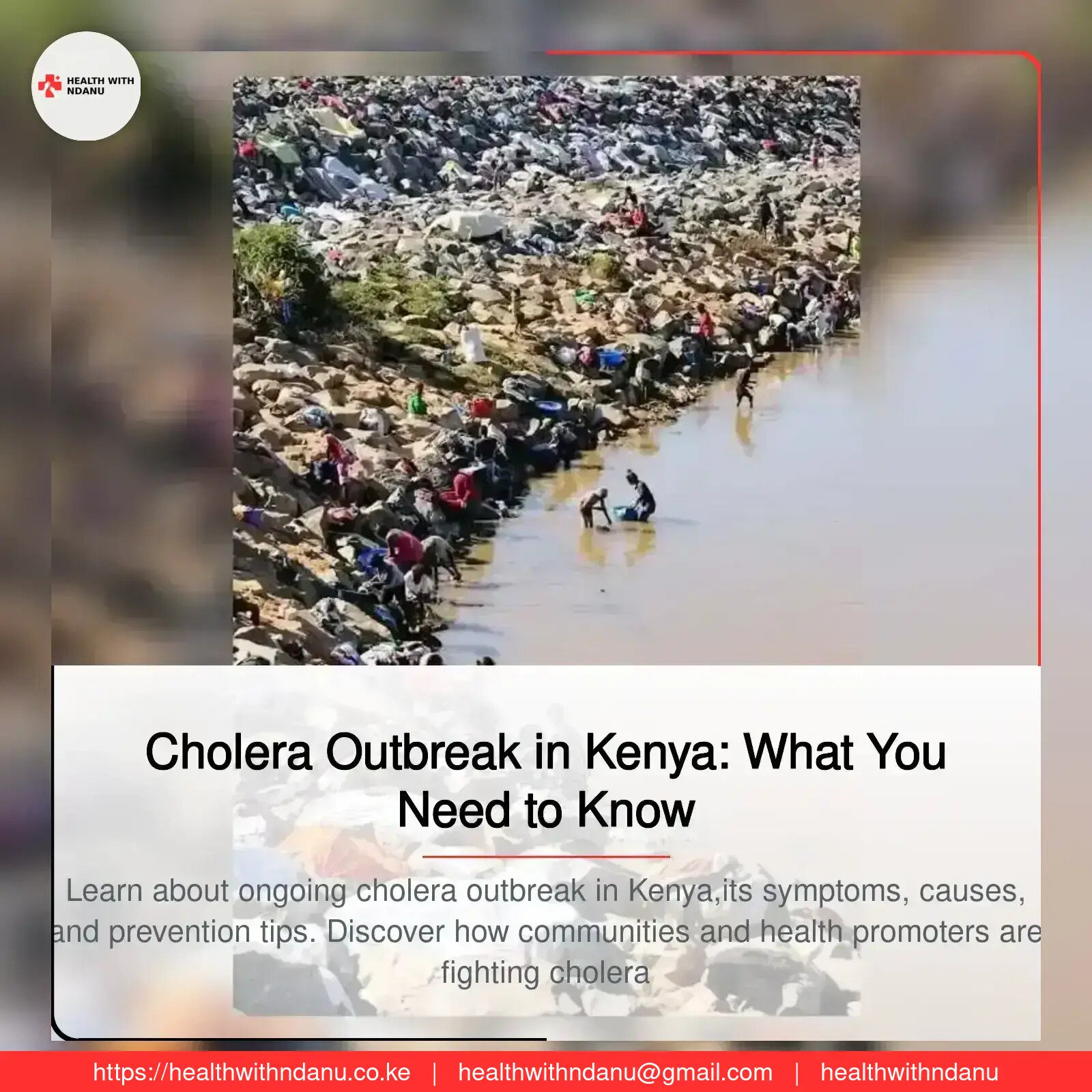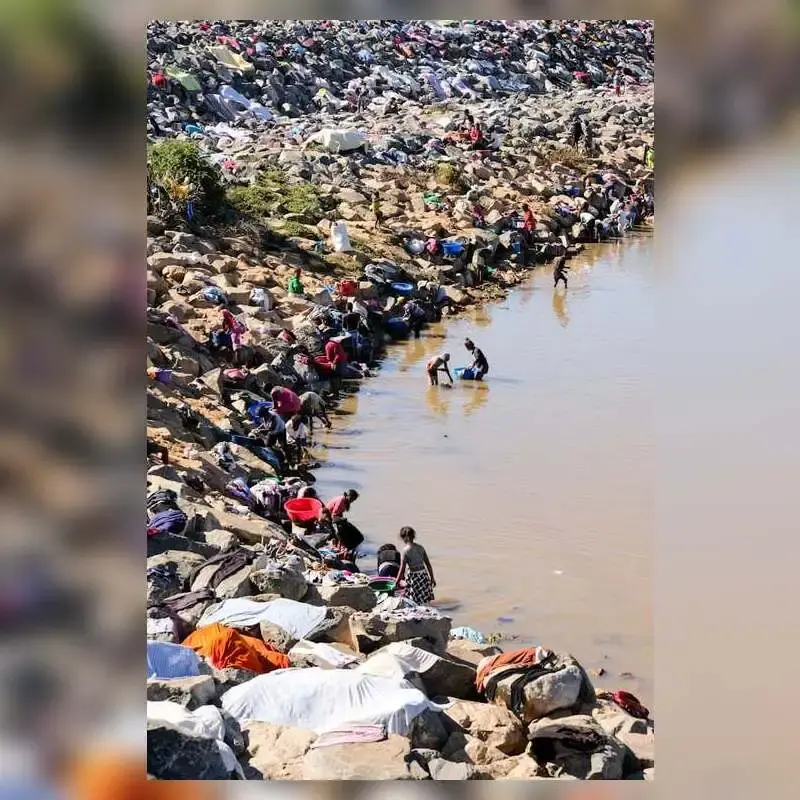Cholera Outbreak in Kenya: What You Need to Know
- by Diana Ndanu
- 08 April, 2025
- 0 Comments
- 8 Mins



Introduction
Cholera is back in the headlines in Kenya—and for all the wrong reasons. Across several counties, cases have been rising fast, and the public health sector is racing to contain the outbreak. If you’ve been watching the news or scrolling through social media, you’ve probably seen stories of people falling ill and even dying from this dangerous waterborne disease.
But how serious is the current cholera outbreak in Kenya? What causes it? And most importantly, what can you do to protect yourself, your family, and your community?
In this in-depth guide, we break it all down in a simple, conversational way—no medical jargon, just practical advice and life-saving information. Let’s talk about cholera, why it’s affecting Kenya now, and what we can all do to stop it in its tracks.
What Is Cholera?
Cholera is an acute diarrheal illness caused by eating or drinking food or water contaminated with the Vibrio cholerae bacterium. It spreads quickly—especially in places where clean water, sanitation, and hygiene (commonly known as WASH) are lacking.
The key thing about cholera is that it can kill within hours if left untreated. However, it’s also very preventable and treatable.
Cholera symptoms include:
- Profuse watery diarrhea (often called “rice water” stools)
- Vomiting
- Rapid loss of body fluids
- Dehydration
- Muscle cramps
- Dry mouth and skin
- Sunken eyes
- Low blood pressure
- In severe cases, the illness can lead to shock and even death if not addressed quickly.
The Current Cholera Outbreak in Kenya (2024–2025)
The recent cholera outbreak in Kenya has affected several counties, including Nairobi, Garissa, Wajir, Mandera, Machakos, and Kisumu. As of early 2025, the Ministry of Health has confirmed thousands of cholera cases, with over 100 deaths reported in different regions.
So what’s causing this outbreak now?
Several factors have come together to create the perfect storm:
- Poor sanitation and unsafe water sources: Many people rely on rivers, boreholes, or shallow wells, which may be contaminated with human waste.
- Flooding and heavy rains: These natural events often lead to the mixing of drinking water and sewage, spreading bacteria faster.
- Limited health infrastructure: In remote villages, getting timely treatment is difficult.
- Population movement and displacement: When people move due to drought, insecurity, or poverty, they may end up in overcrowded areas with poor sanitation.
How Cholera Spreads: It All Starts with Water and Food
To understand how cholera spreads, let’s look at the common ways the Vibrio cholerae bacteria reach people:
- Drinking untreated or dirty water
- Eating food prepared with contaminated water
- Poor hand hygiene after using the toilet
- Sharing food or utensils with infected persons
- Open defecation or poor waste disposal
Cholera doesn’t spread from person to person directly. It spreads through the fecal-oral route—meaning you get infected by accidentally consuming fecal matter in water or food. That’s why clean water and good hygiene are so critical.
Who Is Most at Risk?
While anyone can get cholera, some groups are more vulnerable:
- Children under five
- Elderly people
- Pregnant women
- People with weakened immune systems
- Residents of informal settlements (slums) and refugee camps
- Those living in flood-prone or drought-affected areas
In places where waterborne diseases in Kenya are common, the risk increases dramatically.
What Can You Do to Prevent Cholera?
The good news? You can absolutely protect yourself and your family. Here’s how to prevent cholera in everyday life:
1. Drink Only Safe Water
- Boil your drinking water for at least one minute.
- Use water treatment products like chlorine tablets or filters.
- Store water in clean, covered containers.
2. Practice Good Hygiene
- Always wash your hands with soap and clean water—especially after using the toilet, before eating, and before preparing food.
- If soap and water are not available, use alcohol-based hand sanitizer.
3. Eat Safely
- Cook food thoroughly and eat it while it’s still hot.
- Avoid raw vegetables and fruits unless you can peel them yourself.
- Steer clear of roadside food or drinks unless you’re sure they’re hygienic.
4. Use Clean Toilets
- Always use a latrine or toilet—never defecate in the open.
- Keep toilet areas clean and dispose of waste properly.
5. Clean Surfaces and Utensils
- Wash dishes with clean water and soap.
- Disinfect frequently touched surfaces, especially during outbreaks.
These practices are not just about preventing cholera—they also help reduce the risk of typhoid, dysentery, and other waterborne infections.
What to Do If You Suspect Cholera
If someone in your family shows cholera symptoms, act fast.
Step 1: Rehydrate Immediately
Start oral rehydration at home using Oral Rehydration Salts (ORS). These are available at health centers, pharmacies, and sometimes even local shops. Mix the ORS sachet with safe water and give it in small, frequent sips.
If you don’t have ORS, make a homemade solution:
Homemade Oral Rehydration Solution:
- 6 teaspoons of sugar
- 1/2 teaspoon of salt
- Mix with 1 liter of clean water
Keep giving fluids, even if the person is vomiting. The goal is to replace lost fluids and prevent dehydration.
Step 2: Go to the Nearest Health Facility
Seek treatment immediately. Cholera can worsen rapidly, especially in children and the elderly. Most health centers in Kenya are now on high alert and equipped to handle cholera cases.
How Is Cholera Treated?
Cholera treatment is simple but must be timely.
- Rehydration: This is the most important step—replacing lost fluids and electrolytes.
- Antibiotics: These may be given in moderate to severe cases to reduce the duration of diarrhea.
- Zinc supplements: Often given to children to reduce the severity and length of illness.
- Nutritional support: Restoring lost energy through safe food and fluids.
If treated promptly, the fatality rate is below 1%. But without treatment, cholera can be deadly—especially for children.
Cholera and Public Health in Kenya
Cholera is more than just a medical issue—it’s a reflection of deeper challenges in public health in Kenya.
The outbreak has shone a light on:
- Inadequate access to clean water in many communities
- Poor sanitation infrastructure, especially in informal settlements
- Underfunded health systems in rural and remote areas
- Lack of public awareness and community health education
Government and NGOs are working to improve the situation. Efforts include distributing water treatment kits, training Community Health Promoters (CHPs), improving sanitation in schools, and setting up treatment centers in high-risk counties.
The Role of Community Health Promoters in Fighting Cholera
One of Kenya’s most powerful tools in the fight against cholera is the Community Health Promoter (CHP) network.
CHPs are trained volunteers who:
- Educate families on proper hygiene and sanitation
- Distribute ORS and chlorine tablets
- Monitor water sources
- Refer sick people to health facilities
- Promote handwashing and latrine use
Their grassroots efforts are helping to reduce cholera cases in many villages. Supporting and equipping CHPs is key to stopping outbreaks before they spread.
Myths and Misconceptions About Cholera
Let's bust a few dangerous myths:
-
Myth: Cholera is caused by witchcraft or curses.
Truth: Cholera is caused by bacteria in contaminated water and food.
-
Myth: Cholera only affects the poor.
Truth: Anyone can get cholera if exposed to contaminated water or poor hygiene.
-
Myth: Drinking alcohol kills the cholera bacteria.
Truth: Alcohol does not prevent cholera. Safe water, hygiene, and treatment do.
-
Myth: You should avoid fluids when you have diarrhea.
Truth: You must drink more fluids to prevent dehydration.
Cholera in Kenya: A Wake-Up Call for All of Us
Cholera is not new in Kenya. But every outbreak is a reminder that we need stronger systems, better infrastructure, and public education. We must demand clean water, decent toilets, and proper waste disposal in every village, town, and city.
This isn’t just a government responsibility. It’s a shared effort. Schools, churches, mosques, markets, youth groups—everyone has a role to play in keeping our communities safe.
Final Thoughts: Stay Informed, Stay Safe
As the cholera outbreak in Kenya continues, don’t panic—but don’t ignore the risk either. Be proactive, stay informed, and share this information with others. A few small changes in your daily habits could save your life—or the life of someone you love.
Let’s protect each other.
Resources and Contacts
Here’s where to get help and more information:
- Ministry of Health Kenya Cholera Hotline: 719
- Community Health Volunteers (CHVs) in your area
- Nearest health center or dispensary
- Kenya Red Cross: Offers water and sanitation support
- WHO Cholera Prevention Guide: www.who.int
Call to Action
If you found this article helpful, share it on WhatsApp, Facebook, and in your community groups. Let’s use our voices and networks to spread awareness faster than cholera can spread.
Got Your Own Experience? Share with us
Kategoria Maarufu
Blogu Zinazotembelewa Zaidi
Daily Newsletter
Get all the top stories from Blogs to keep track.



